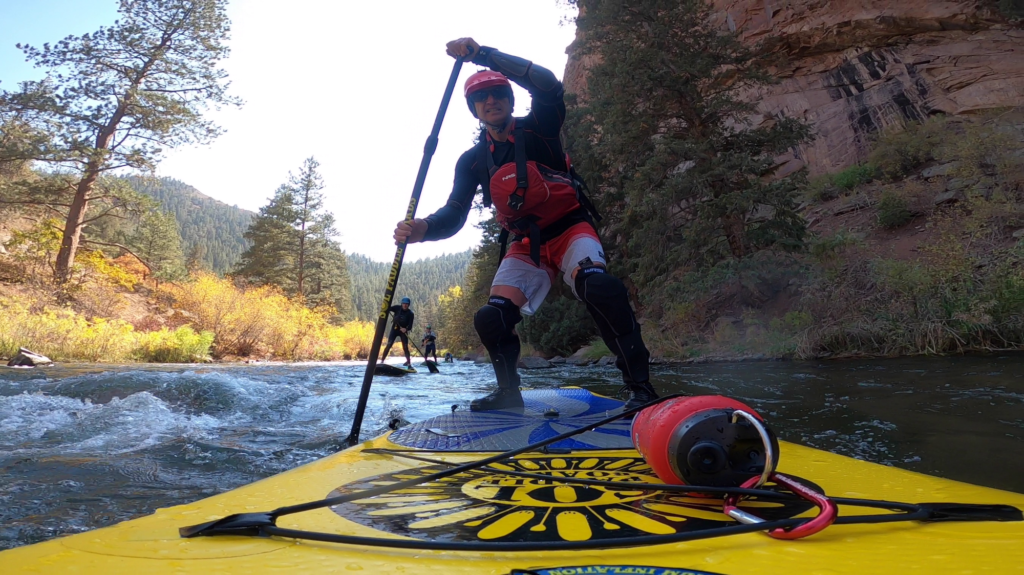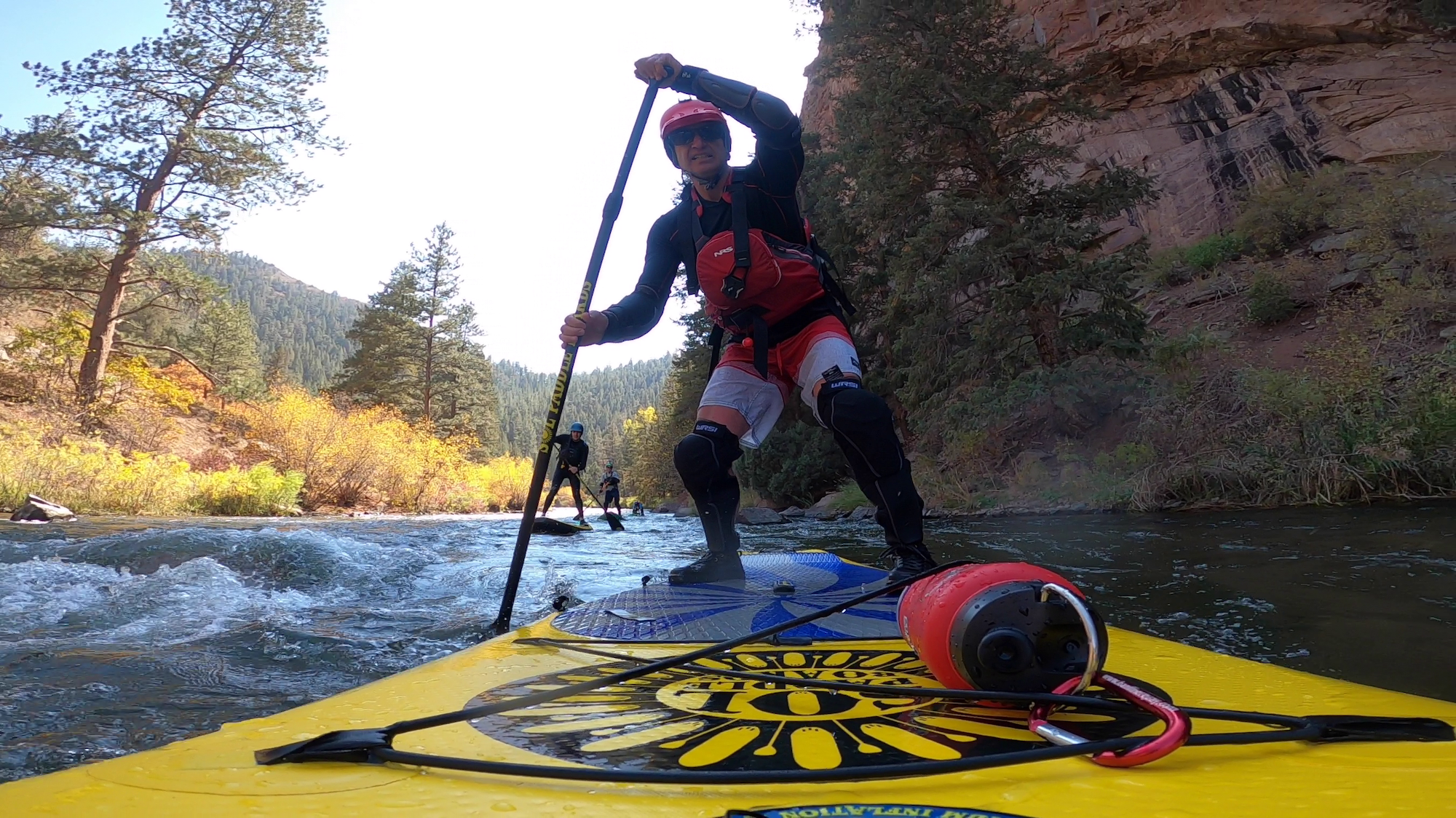
A new sport for us! Whitewater Standup Paddle Boarding is a mouthful, but what is it? Whitewater Standup Paddle Boarding or whitewater SUPing is taking your paddle board on a river with rapids. The stretches of river we seek out for SUPing will generally contain class I – III rapids.
I want to Whitewater SUP, how do I get started?
You need the gear. A high quality, bare bones outfit consisting of a river paddle board, paddle, PFD, whitewater helmet and water shoes can be had for under $2000 or rented from your local outfitter. If you are in Colorado, you can visit our favorite shop or order from them online:
If you have been on a SUP on a pond or lake, that is a good first step. On flat water you can get a feel for the balance required to stand on the paddle board and how to paddle. If you find yourself a little bored after some time on flat water, paddling in whitewater may be for you.
Get your safety equipment. Yes, this is first!
- PFD – A type V personal flotation device such as the NRS Zen. The type V PFD will not come off in rough water, does not inhibit body movement and offers good flotation. My favorite is the NRS Zen PFD.
- Helmet – Rocks are always a part of whitewater sports. Rocks are almost always harder than your head and it is difficult to swim well when you are unconscious. Always wear a good whitewater specific helmet when doing whitewater activities. My favorite is the WRSI Current Pro, because it is super comfortable.
- River shoes – River shoes offer protection for your toes and will not pull off by the force of moving water. The Astral Hiyak water shoes are comfortable, provide great traction and stay securely on your feet.
- Elbow/Knee/Shin pads – Rocks are harder than bones. Once again, turning to WRSI for safety gear, the WRSI elbow pads and WRSI Animas knee/shin pads stay in place, dry quickly and provide the protection you want.
- Sunglasses – Polarized sunglasses help seeing into the water and protect your eyes from sunlight and glare. It is best to use a retention device like Croakies to ensure you don’t lose your sunglasses.
- Knife – The need for a knife is generally to free yourself should you get tangled in rope or other types of line that may be in a river. The NRS Pilot knife mounts nicely onto the NRS and other PFDs.
- Distress Whistle – If you get in trouble and need help, blow a distress whistle to attract attention. Be sure to not cry wolf and blow the whistle when not in distress.
- Throw bag – A throw bag is a bag of floating rope that can be used to help in a rescue by throwing it across the water to someone in need of rescue.
- Emergency communicator / location tracker – We’ve become dependent on our cell phones for so many reasons. However, when in remote areas as many rivers are, the cell phone is not nearly as useful as it could be. A satellite communicator will allow you to communicate with loved ones or authorities when out of cell phone signal range. In an emergency, this can mean the difference between life and death. While Garmin devices are finicky, the Garmin InReach Mini is the best combination of capability and value.
Get your SUP equipment
- Standup paddle board – The paddle board is the star of this show. There are different types, shapes and dimensions, all for different uses. Our favorites for whitewater river SUPing are the Hala Atcha 9’6″ and the Sol Shine. However, depending on the water you plan to run and your own dimensions and skill level, you may prefer a different paddle board from the lineup. This is where speaking with an expert is helpful.
- Fins – Paddle boards need fins for stability. The paddle boards come with fins, but having an assortment of sizes is helpful for optimizing the day based on water conditions.
- Pump – The paddle boards referenced above are the inflatable type. An electric pump will make getting the day started easier, especially when you have multiple paddle boards to inflate.
- Paddle – You don’t want to be up a creek without one. Depending on the paddle board that you purchase, it may come with a paddle.
- Leash (optional) – You have to be selective when using a leash as it can be a detriment in challenging water. A leash connects the rear of the paddle board to the quick-release ring on the lower back of your type V PFD. A leash should never be attached to the ankle in whitewater.
- Dry bag – You’ll want to bring items with you on your paddle board adventure like snacks, camera and satellite communicator. A dry bag will allow you to protect these items from the water and attach them to your paddle board. Sometimes an additional smaller dry bag for electronics is helpful for extra security.
- Wet suit / dry suit – Sometimes when you want to go paddle boarding, the water or air temperature will be cooler than is comfortable. A wet suit or wet suit separates will help insulate you from the cold water. A dry suit will keep the water off of you entirely.
Check out our other posts for more information on white water stand up paddle boarding.



